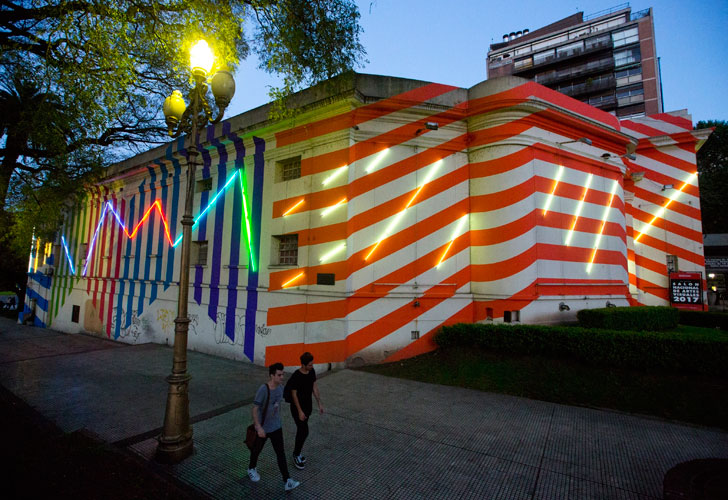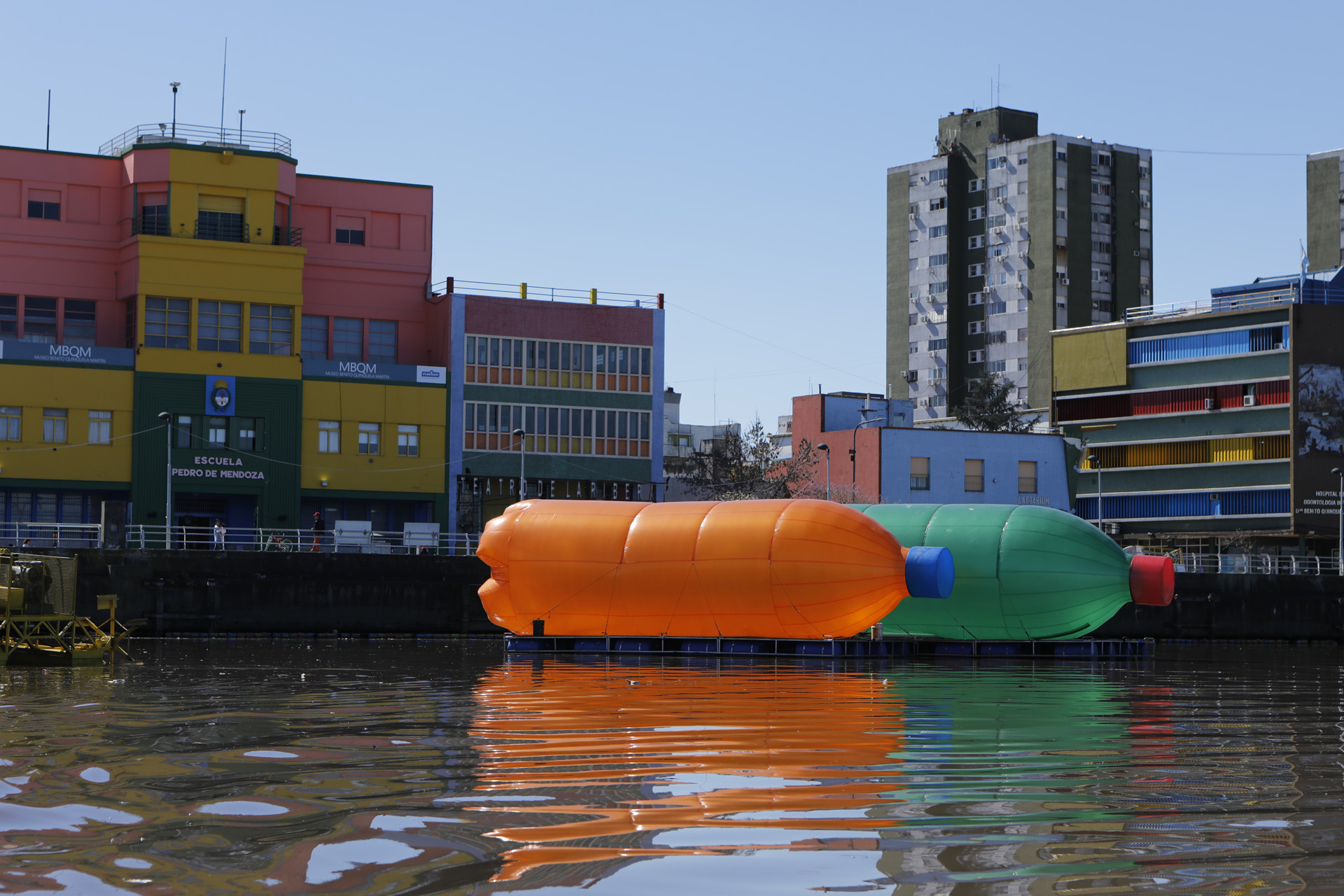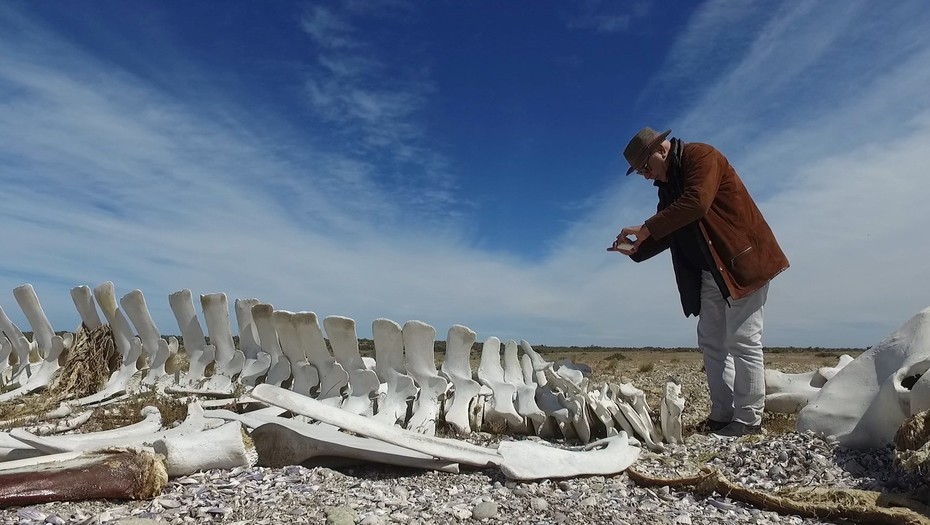Until December, Bienalsur will take place several in venues of Argentina and South America.
What is Bienalsur?
It is the first edition of the International Biennial of Contemporary Art of South America.
As its name shows, Bienalsur is held every two years and it looks at the work of independent artists.
Even though this first edition will be over in a month, there is still time to enjoy its offer. Besides, perhaps you have already visited it without even noticing… How come?
Bienalsur covers the whole territory as an exhibition space (different museums, cultural centers, buildings and public spaces’ landmarks), and besides, it is for free.
That’s why, if you have walked around Recoleta, you have probably noticed that the Palais de Glace is painted differently than it used to be, and at night it adds neon lights to is color-intervened façade.

Or, if you have visited La Boca, you have probably seen this:

Srur’s intervention consists of a full-scale installation, with floating sculptures made out of pet bottles (photo) that aims to reflect on water pollution from an artistic point of view. The artist is willing to put environmental issues and life in big cities under the spotlight, that is why his intervention can be found in the Parana River (Rosario) and in the Riachuelo (Vuelta de Rocha).
Here in Ammanik, we love this routine-breaking urban artistic interventions.
Can you remember the time when the Obelisk’s tip went missing? In fact, its author, Leandro Erlich, is one of the artists who takes part in Bienalsur.
Erlich’s work in Bienalsur is Corre por la música (Run for the Music), which is both interactive and participative. His intervention can be found in the Tigre Art Museum (MAT) and consists of an almost 200 feet long sort of xylophone, spread along the space. Visitors can turn on this big instrument by jogging and playing its tunes with a stick. The result: a fragment of Beethoven’s Ninth Symphony.
Another feature of Bienalsur is the creation of a cartography of its own, with its kilometer 0 marker in the city of Buenos Aires. It covers 18.370 kilometers of contemporary art, available to walk and enjoy. It has venues in 32 cities from 16 countries, with simultaneous exhibitions.
The aim is to erase temporal and spatial borders by means of technology. The use of screens erases the spatial-temporal distance and enables the simultaneous participation in different shows and related events held in different cities.
This is precisely what happens with the work Misterios (Mysteries), by Christian Boltanski (France). This installation sits in the kilometer 1548 of Bienalsur, right in Bahía Bustamante, in the province of Chubut (Argentine Patagonia).

Three iron bagpipes (440 pounds each) were installed over there by Boltanski himself, and when the wind blows, they move and sound like whales do.
If you are unable to travel to Bustamante Bay to see Boltanski’s work, you can always visit the Museum of Fine Artes (MNBA) until December 10th, where the footage of Mysteries is shown. In a surrounding atmosphere, you can listen to the bagpipes’ sound and travel to Boltanski’s mysterious universe, in Bustamante Bay.
There are plenty of works to see in Bienalsur and there is still time to do it.
Below, you will find a map with some of the Biennial kilometers that can be visited. You can find the complete information in Bienalsur’s website.
You can also follow us on Instagram, where we will upload some pictures and videos of Bienalsur in our Stories.

